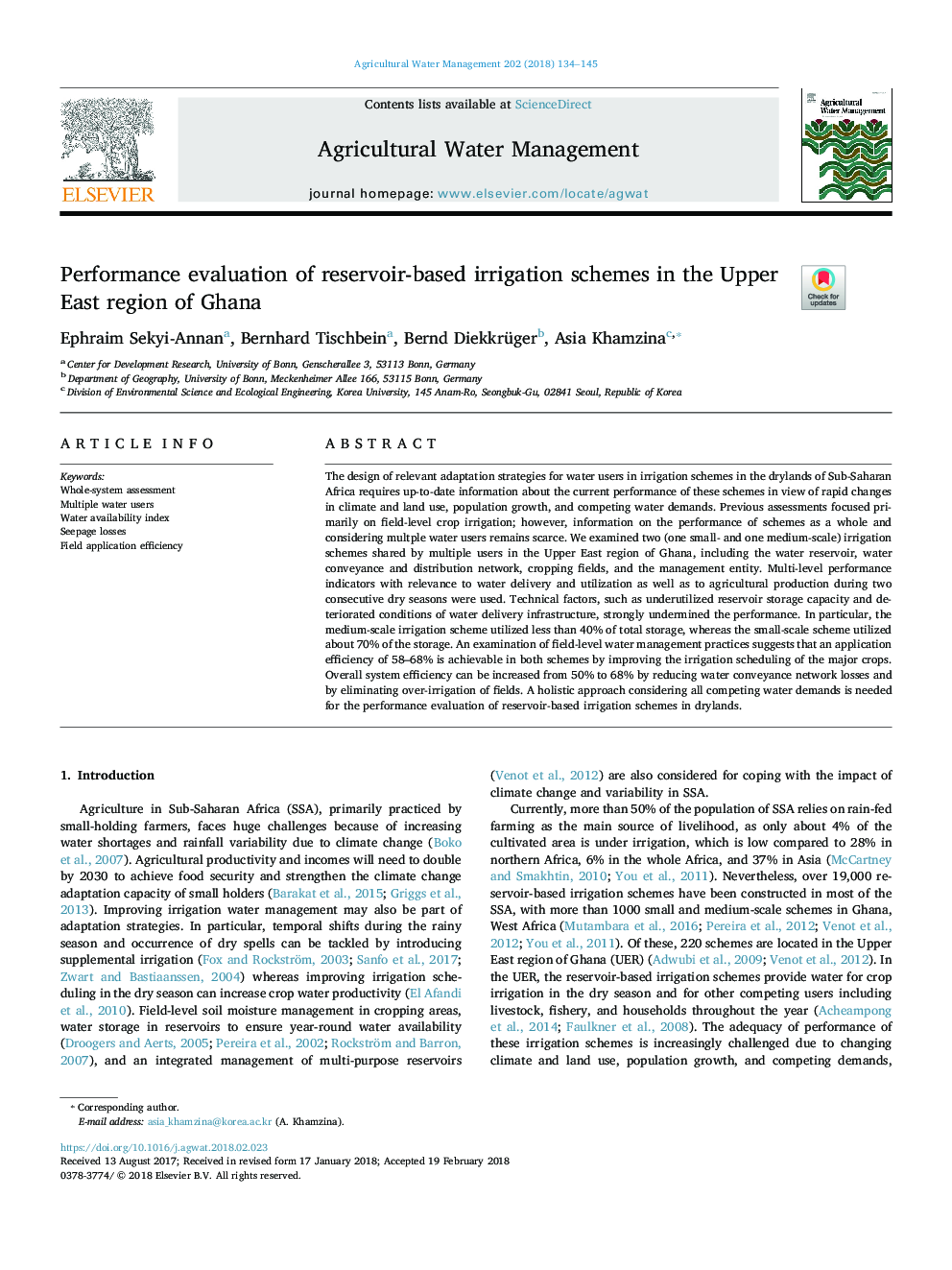| Article ID | Journal | Published Year | Pages | File Type |
|---|---|---|---|---|
| 8873025 | Agricultural Water Management | 2018 | 12 Pages |
Abstract
The design of relevant adaptation strategies for water users in irrigation schemes in the drylands of Sub-Saharan Africa requires up-to-date information about the current performance of these schemes in view of rapid changes in climate and land use, population growth, and competing water demands. Previous assessments focused primarily on field-level crop irrigation; however, information on the performance of schemes as a whole and considering multple water users remains scarce. We examined two (one small- and one medium-scale) irrigation schemes shared by multiple users in the Upper East region of Ghana, including the water reservoir, water conveyance and distribution network, cropping fields, and the management entity. Multi-level performance indicators with relevance to water delivery and utilization as well as to agricultural production during two consecutive dry seasons were used. Technical factors, such as underutilized reservoir storage capacity and deteriorated conditions of water delivery infrastructure, strongly undermined the performance. In particular, the medium-scale irrigation scheme utilized less than 40% of total storage, whereas the small-scale scheme utilized about 70% of the storage. An examination of field-level water management practices suggests that an application efficiency of 58-68% is achievable in both schemes by improving the irrigation scheduling of the major crops. Overall system efficiency can be increased from 50% to 68% by reducing water conveyance network losses and by eliminating over-irrigation of fields. A holistic approach considering all competing water demands is needed for the performance evaluation of reservoir-based irrigation schemes in drylands.
Related Topics
Life Sciences
Agricultural and Biological Sciences
Agronomy and Crop Science
Authors
Ephraim Sekyi-Annan, Bernhard Tischbein, Bernd Diekkrüger, Asia Khamzina,
